System V Release 3 on:
[Wikipedia]
[Google]
[Amazon]
Unix System V (pronounced: "System Five") is one of the first commercial versions of the Unix operating system. It was originally developed by AT&T and first released in 1983. Four major versions of System V were released, numbered 1, 2, 3, and 4. System V Release 4 (SVR4) was commercially the most successful version, being the result of an effort, marketed as ''Unix System Unification'', which solicited the collaboration of the major Unix vendors. It was the source of several common commercial Unix features. System V is sometimes abbreviated to SysV.
, the AT&T-derived Unix market is divided between four System V variants: IBM's AIX, Hewlett Packard Enterprise's

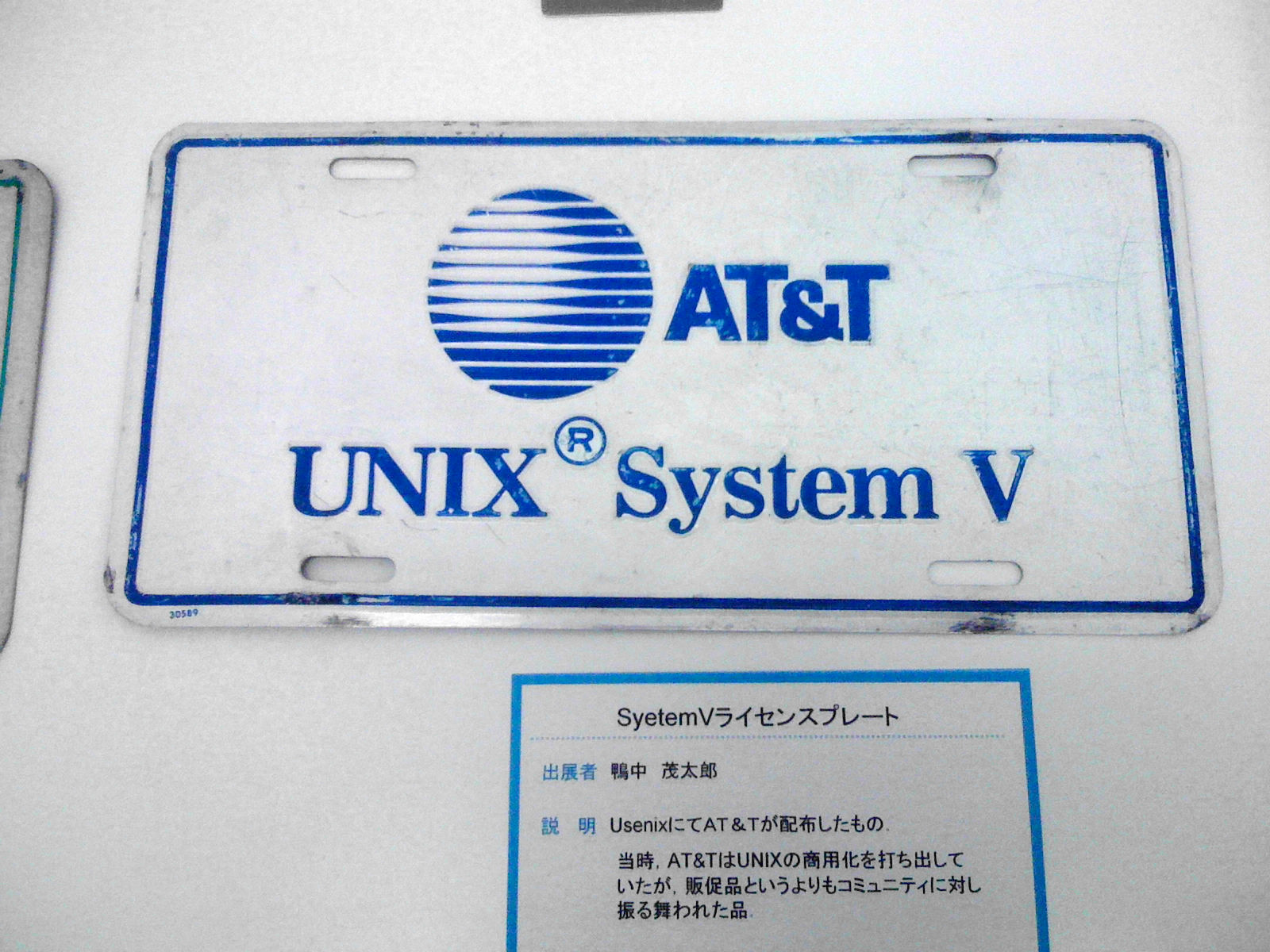
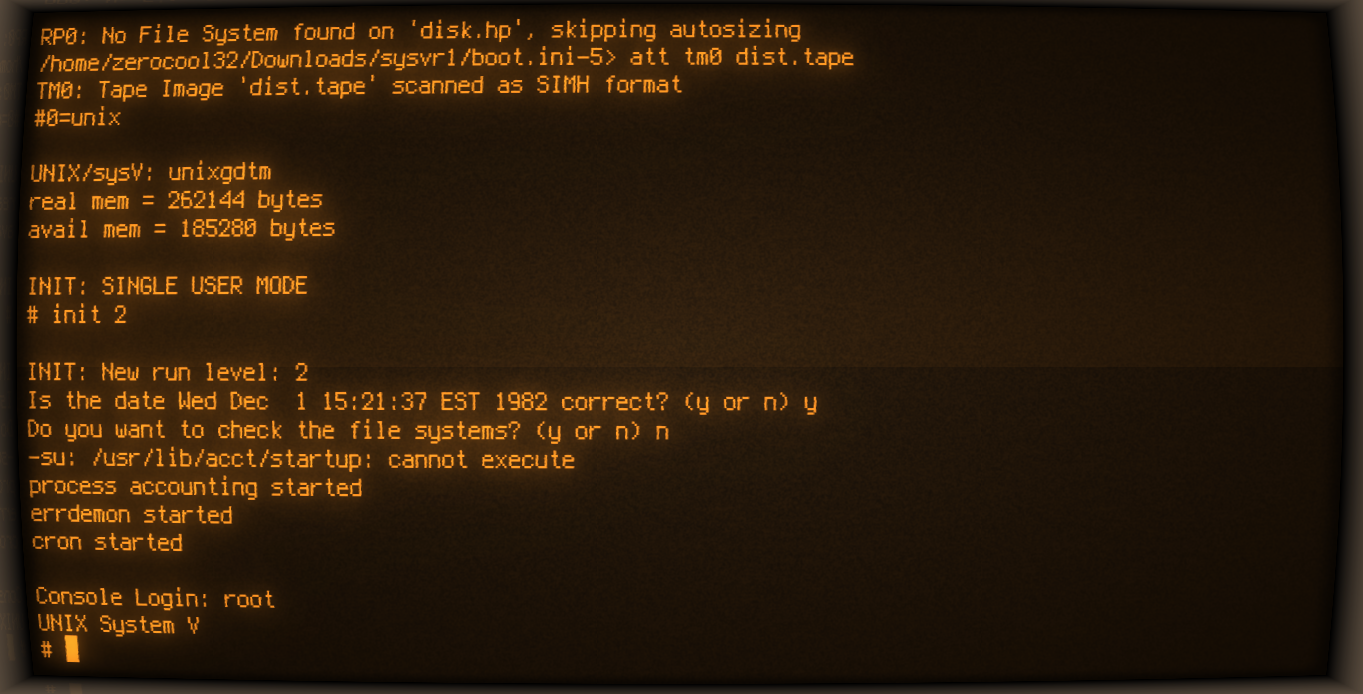 System V was the successor to 1982's UNIX System III. While AT&T developed and sold hardware that ran System V, most customers ran a version from a reseller, based on AT&T's reference implementation. A standards document called the System V Interface Definition outlined the default features and behavior of implementations.
System V was the successor to 1982's UNIX System III. While AT&T developed and sold hardware that ran System V, most customers ran a version from a reseller, based on AT&T's reference implementation. A standards document called the System V Interface Definition outlined the default features and behavior of implementations.

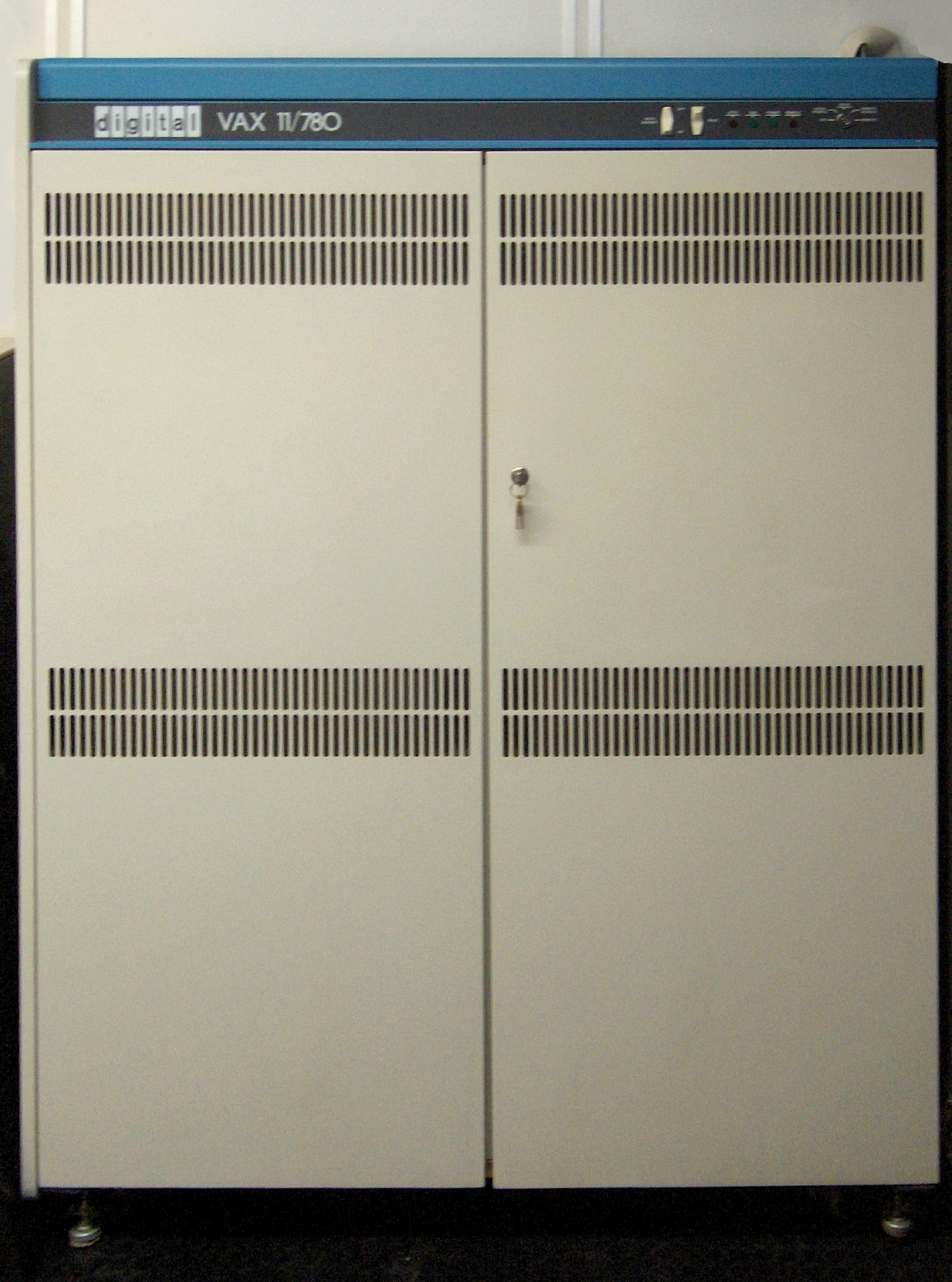 AT&T's UNIX Support Group (USG) transformed into the UNIX System Development Laboratory (USDL), which released System V Release 2 in 1984. SVR2 added shell functions and the SVID. SVR2.4 added demand paging, copy-on-write, shared memory, and record and file locking.
The concept of the "porting base" was formalized, and the DEC VAX-11/780 was chosen for this release. The "porting base" is the so-called original version of a release, from which all porting efforts for other machines emanate.
Educational source licenses for SVR2 were offered by AT&T for US$800 for the first CPU, and $400 for each additional CPU. A commercial source license was offered for $43,000, with three months of support, and a $16,000 price per additional CPU.
AT&T's UNIX Support Group (USG) transformed into the UNIX System Development Laboratory (USDL), which released System V Release 2 in 1984. SVR2 added shell functions and the SVID. SVR2.4 added demand paging, copy-on-write, shared memory, and record and file locking.
The concept of the "porting base" was formalized, and the DEC VAX-11/780 was chosen for this release. The "porting base" is the so-called original version of a release, from which all porting efforts for other machines emanate.
Educational source licenses for SVR2 were offered by AT&T for US$800 for the first CPU, and $400 for each additional CPU. A commercial source license was offered for $43,000, with three months of support, and a $16,000 price per additional CPU.


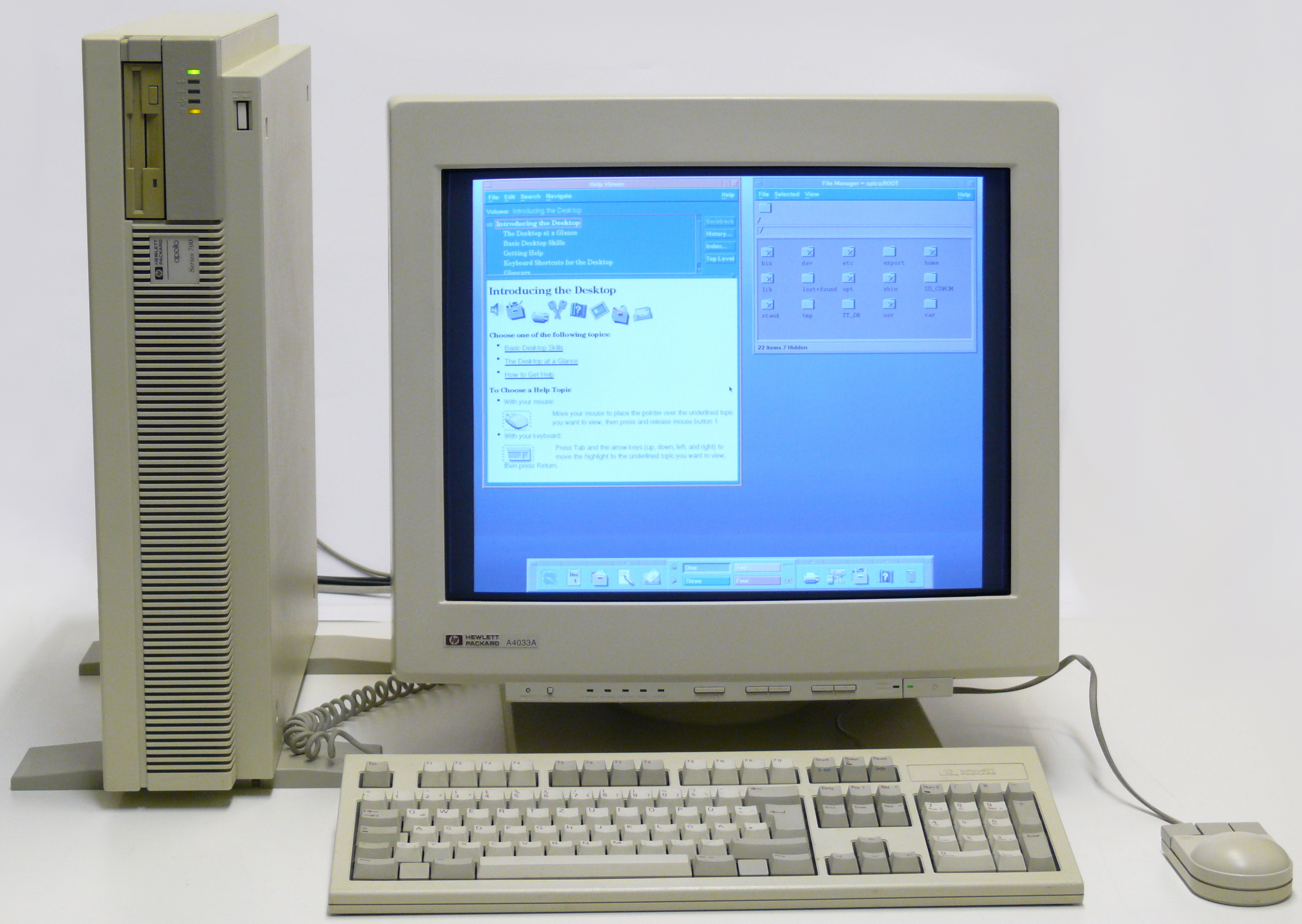

 System V Release 4.0 was announced on October 18, 1988 and was incorporated into a variety of commercial Unix products from early 1989 onwards. A joint project of AT&T Unix System Laboratories and
System V Release 4.0 was announced on October 18, 1988 and was incorporated into a variety of commercial Unix products from early 1989 onwards. A joint project of AT&T Unix System Laboratories and
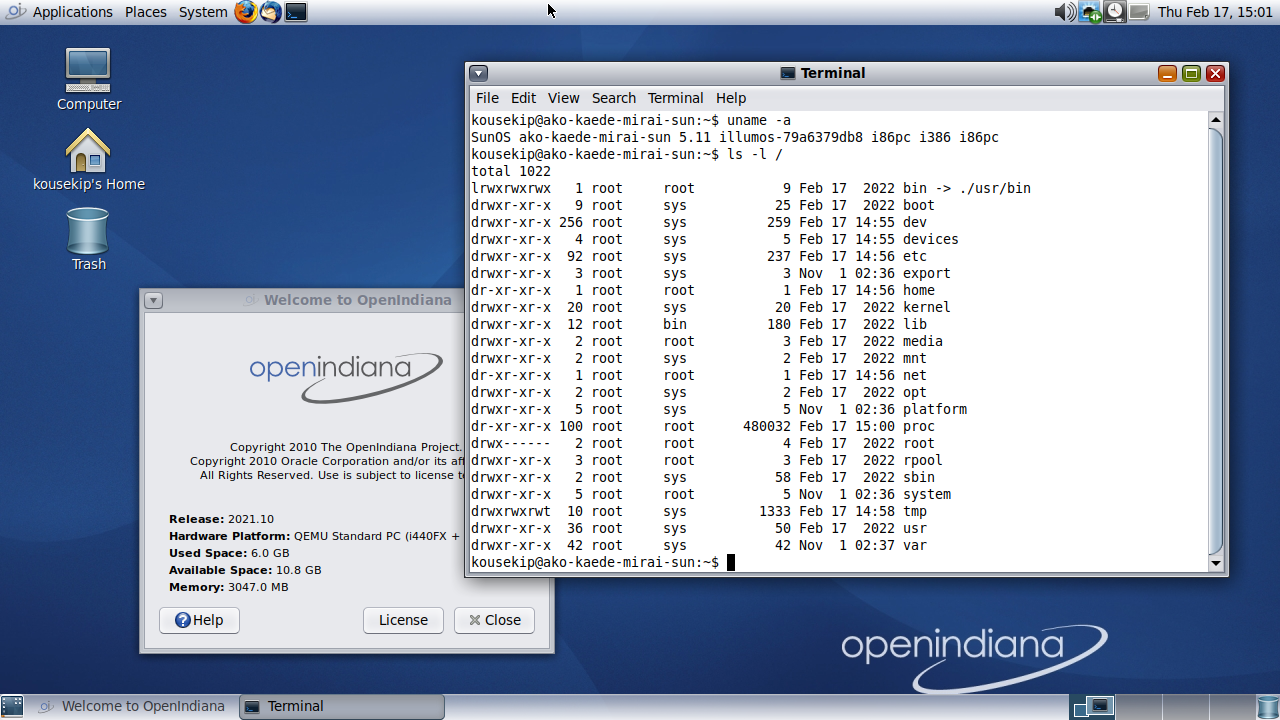
 OpenSolaris and its derivatives are the only SVR4 descendants that are open-source software.
Core system software continues to be developed as illumos used in illumos distributions such as SmartOS, Omniosce, OpenIndiana and others.
OpenSolaris and its derivatives are the only SVR4 descendants that are open-source software.
Core system software continues to be developed as illumos used in illumos distributions such as SmartOS, Omniosce, OpenIndiana and others.
PC-clone UNIX Software Buyer's Guide
by
Unix FAQ - history
A Unix History Diagram
- The original and continuously updated version of the Unix history, as published by O'Reilly {{DEFAULTSORT:Unix System V Unix distributions 1983 software
HP-UX
HP-UX (from "Hewlett Packard Unix") is Hewlett Packard Enterprise's proprietary implementation of the Unix operating system, based on Unix System V (initially System III) and first released in 1984. Current versions support HPE Integrity Ser ...
and Oracle
An oracle is a person or agency considered to provide wise and insightful counsel or prophetic predictions, most notably including precognition of the future, inspired by deities. As such, it is a form of divination.
Description
The word '' ...
's Solaris
Solaris may refer to:
Arts and entertainment Literature, television and film
* ''Solaris'' (novel), a 1961 science fiction novel by Stanisław Lem
** ''Solaris'' (1968 film), directed by Boris Nirenburg
** ''Solaris'' (1972 film), directed by ...
, plus the free-software illumos forked from OpenSolaris
OpenSolaris () is a discontinued open-source computer operating system based on Solaris and created by Sun Microsystems. It was also, perhaps confusingly, the name of a project initiated by Sun to build a developer and user community around th ...
.
Overview
Introduction

 System V was the successor to 1982's UNIX System III. While AT&T developed and sold hardware that ran System V, most customers ran a version from a reseller, based on AT&T's reference implementation. A standards document called the System V Interface Definition outlined the default features and behavior of implementations.
System V was the successor to 1982's UNIX System III. While AT&T developed and sold hardware that ran System V, most customers ran a version from a reseller, based on AT&T's reference implementation. A standards document called the System V Interface Definition outlined the default features and behavior of implementations.
AT&T support
During the formative years of AT&T's computer business, the division went through several phases of System V software groups, beginning with the Unix Support Group (USG), followed by Unix System Development Laboratory (USDL), followed by AT&T Information Systems (ATTIS), and finally Unix System Laboratories (USL).Rivalry with BSD
In the 1980s and early-1990s, UNIX System V and theBerkeley Software Distribution
The Berkeley Software Distribution or Berkeley Standard Distribution (BSD) is a discontinued operating system based on Research Unix, developed and distributed by the Computer Systems Research Group (CSRG) at the University of California, Berk ...
(BSD) were the two major versions of UNIX. Historically, BSD was also commonly called "BSD Unix" or "Berkeley Unix". Eric S. Raymond
Eric Steven Raymond (born December 4, 1957), often referred to as ESR, is an American software developer, open-source software advocate, and author of the 1997 essay and 1999 book ''The Cathedral and the Bazaar''. He wrote a guidebook for the ...
summarizes the longstanding relationship and rivalry between System V and BSD during the early period:
While HP, IBM and others chose System V as the basis for their Unix offerings, other vendors such as Sun Microsystems
Sun Microsystems, Inc. (Sun for short) was an American technology company that sold computers, computer components, software, and information technology services and created the Java programming language, the Solaris operating system, ZFS, the ...
and DEC extended BSD. Throughout its development, though, System V was infused with features from BSD, while BSD variants such as DEC's Ultrix
Ultrix (officially all-caps ULTRIX) is the brand name of Digital Equipment Corporation's (DEC) discontinued native Unix operating systems for the PDP-11, VAX, MicroVAX and DECstations.
History
The initial development of Unix occurred on DEC equip ...
received System V features. AT&T and Sun Microsystems worked together to merge System V with BSD-based SunOS
SunOS is a Unix-branded operating system developed by Sun Microsystems for their workstation and server computer systems. The ''SunOS'' name is usually only used to refer to versions 1.0 to 4.1.4, which were based on BSD, while versions 5.0 and l ...
to produce Solaris
Solaris may refer to:
Arts and entertainment Literature, television and film
* ''Solaris'' (novel), a 1961 science fiction novel by Stanisław Lem
** ''Solaris'' (1968 film), directed by Boris Nirenburg
** ''Solaris'' (1972 film), directed by ...
, one of the primary System V descendants still in use today. Since the early 1990s, due to standardization efforts such as POSIX and the success of Linux, the division between System V and BSD has become less important.
Releases

SVR1
System V, known inside Bell Labs as Unix 5.0, succeeded AT&T's previous commercial Unix called System III in January, 1983. Unix 4.0 was never released externally, which would have been designated as System IV. This first release of System V (called System V.0, System V Release 1, or SVR1) was developed by AT&T's UNIX Support Group (USG) and based on the Bell Labs internal USG UNIX 5.0. System V also included features such as the vi editor and curses from 4.1 BSD, developed at the University of California, Berkeley; it also improved performance by adding buffer andinode
The inode (index node) is a data structure in a Unix-style file system that describes a file-system object such as a file or a directory. Each inode stores the attributes and disk block locations of the object's data. File-system object attribute ...
caches. It also added support for inter-process communication
In computer science, inter-process communication or interprocess communication (IPC) refers specifically to the mechanisms an operating system provides to allow the processes to manage shared data. Typically, applications can use IPC, categori ...
using messages, semaphore
Semaphore (; ) is the use of an apparatus to create a visual signal transmitted over distance. A semaphore can be performed with devices including: fire, lights, flags, sunlight, and moving arms. Semaphores can be used for telegraphy when arra ...
s, and shared memory, developed earlier for the Bell-internal CB UNIX.
SVR1 ran on DEC PDP-11
The PDP-11 is a series of 16-bit minicomputers sold by Digital Equipment Corporation (DEC) from 1970 into the 1990s, one of a set of products in the Programmed Data Processor (PDP) series. In total, around 600,000 PDP-11s of all models were sold, ...
and VAX minicomputer
A minicomputer, or colloquially mini, is a class of smaller general purpose computers that developed in the mid-1960s and sold at a much lower price than mainframe and mid-size computers from IBM and its direct competitors. In a 1970 survey, ...
s.
SVR2
 AT&T's UNIX Support Group (USG) transformed into the UNIX System Development Laboratory (USDL), which released System V Release 2 in 1984. SVR2 added shell functions and the SVID. SVR2.4 added demand paging, copy-on-write, shared memory, and record and file locking.
The concept of the "porting base" was formalized, and the DEC VAX-11/780 was chosen for this release. The "porting base" is the so-called original version of a release, from which all porting efforts for other machines emanate.
Educational source licenses for SVR2 were offered by AT&T for US$800 for the first CPU, and $400 for each additional CPU. A commercial source license was offered for $43,000, with three months of support, and a $16,000 price per additional CPU.
AT&T's UNIX Support Group (USG) transformed into the UNIX System Development Laboratory (USDL), which released System V Release 2 in 1984. SVR2 added shell functions and the SVID. SVR2.4 added demand paging, copy-on-write, shared memory, and record and file locking.
The concept of the "porting base" was formalized, and the DEC VAX-11/780 was chosen for this release. The "porting base" is the so-called original version of a release, from which all porting efforts for other machines emanate.
Educational source licenses for SVR2 were offered by AT&T for US$800 for the first CPU, and $400 for each additional CPU. A commercial source license was offered for $43,000, with three months of support, and a $16,000 price per additional CPU.
Apple Computer
Apple Inc. is an American multinational technology company headquartered in Cupertino, California, United States. Apple is the largest technology company by revenue (totaling in 2021) and, as of June 2022, is the world's biggest company b ...
's A/UX operating system was initially based on this release. SCO XENIX also used SVR2 as its basis. The first release of HP-UX
HP-UX (from "Hewlett Packard Unix") is Hewlett Packard Enterprise's proprietary implementation of the Unix operating system, based on Unix System V (initially System III) and first released in 1984. Current versions support HPE Integrity Ser ...
was also an SVR2 derivative.
Maurice J. Bach's book, ''The Design of the UNIX Operating System'', is the definitive description of the SVR2 kernel.
SVR3
AT&T's UNIX System Development Laboratory (USDL) was succeeded by AT&T Information Systems (ATTIS), which distributed UNIX System V, Release 3, in 1987. SVR3 includedSTREAMS
A stream is a continuous body of water, body of surface water Current (stream), flowing within the stream bed, bed and bank (geography), banks of a channel (geography), channel. Depending on its location or certain characteristics, a stream ...
, Remote File Sharing Remote File Sharing (RFS) is a Unix operating system component for sharing resources, such as files, devices, and file system directories, across a network, in a network-independent manner, similar to a distributed file system. It was developed at B ...
(RFS), the File System Switch (FSS) virtual file system mechanism, a restricted form of shared libraries, and the Transport Layer Interface
In computer networking, the Transport Layer Interface (TLI) was the networking API provided by AT&T UNIX System V Release 3 (SVR3) in 1987 and continued into Release 4 (SVR4). TLI was the System V counterpart to the BSD sockets programming inter ...
(TLI) network API. The final version was Release 3.2 in 1988, which added binary compatibility to Xenix on Intel platforms (see Intel Binary Compatibility Standard The Intel Binary Compatibility Standard (iBCS) is a standardized application binary interface (ABI) for Unix operating systems on Intel-386-compatible computers, published by AT&T, Intel and SCO in 1988, and updated in 1990. It extends source-leve ...
).
User interface improvements included the "layers" windowing system for the DMD 5620 graphics terminal, and the SVR3.2 curses libraries that offered eight or more color pairs and other at this time important features (forms, panels, menus, etc.). The AT&T 3B2 became the official "porting base."
SCO UNIX was based upon SVR3.2, as was ISC 386/ix. Among the more obscure distributions of SVR3.2 for the 386 were ESIX 3.2 by Everex and "System V, Release 3.2" sold by Intel themselves; these two shipped "plain vanilla" AT&T's codebase.
IBM's AIX operating system is an SVR3 derivative.
SVR4




 System V Release 4.0 was announced on October 18, 1988 and was incorporated into a variety of commercial Unix products from early 1989 onwards. A joint project of AT&T Unix System Laboratories and
System V Release 4.0 was announced on October 18, 1988 and was incorporated into a variety of commercial Unix products from early 1989 onwards. A joint project of AT&T Unix System Laboratories and Sun Microsystems
Sun Microsystems, Inc. (Sun for short) was an American technology company that sold computers, computer components, software, and information technology services and created the Java programming language, the Solaris operating system, ZFS, the ...
, it combined technology from:
* SVR3
* 4.3BSD The History of the Berkeley Software Distribution begins in the 1970s.
1BSD (PDP-11)
The earliest distributions of Unix from Bell Labs in the 1970s included the source code to the operating system, allowing researchers at universities to modify an ...
* Xenix
* SunOS
SunOS is a Unix-branded operating system developed by Sun Microsystems for their workstation and server computer systems. The ''SunOS'' name is usually only used to refer to versions 1.0 to 4.1.4, which were based on BSD, while versions 5.0 and l ...
New features included:
* From BSD:
** TCP/IP support
** Sockets
** UFS
** Support for multiple groups
** C shell
* From SunOS:
** Virtual file system interface (replacing File System Switch in System V Release 3)
** NFS
** New virtual memory system including support for memory mapped files
** Improved shared library system based on the SunOS 4.x model
** OpenWindows GUI environment
** External Data Representation
External Data Representation (XDR) is a standard data serialization format, for uses such as computer network protocols. It allows data to be transferred between different kinds of computer systems. Converting from the local representation to XD ...
(XDR) and ONC RPC
* From Xenix:
** x86 device driver
In computing, a device driver is a computer program that operates or controls a particular type of device that is attached to a computer or automaton. A driver provides a software interface to hardware devices, enabling operating systems and ot ...
s
** Binary compatibility with Xenix (in the x86 version of System V)
* KornShell
KornShell (ksh) is a Unix shell which was developed by David Korn at Bell Labs in the early 1980s and announced at USENIX on July 14, 1983. The initial development was based on Bourne shell source code. Other early contributors were Bell ...
* ANSI X3J11 C compatibility
* Multi-National Language Support (MNLS)
* Better internationalization support
* An application binary interface (ABI) based on Executable and Linkable Format (ELF)
* Support for standards such as POSIX and X/Open
Many companies licensed SVR4 and bundled it with computer systems such as workstations and network servers. SVR4 systems vendors included Atari
Atari () is a brand name that has been owned by several entities since its inception in 1972. It is currently owned by French publisher Atari SA through a subsidiary named Atari Interactive. The original Atari, Inc. (1972–1992), Atari, Inc., ...
(Atari System V
The Atari TT030 is a member of the Atari ST family, released in 1990. It was originally intended to be a high-end Unix workstation, but Atari took two years to release a port of Unix SVR4 for the TT, which prevented the TT from ever being serio ...
), Commodore (Amiga Unix
Amiga Unix (informally known as Amix) is a discontinued full port of AT&T Unix System V Release 4 operating system developed by Commodore-Amiga, Inc. in 1990 for the Amiga computer family as an alternative to AmigaOS, which shipped by default.
O ...
), Data General ( DG/UX), Fujitsu
is a Japanese multinational information and communications technology equipment and services corporation, established in 1935 and headquartered in Tokyo. Fujitsu is the world's sixth-largest IT services provider by annual revenue, and the la ...
( UXP/DS), Hitachi
() is a Japanese multinational corporation, multinational Conglomerate (company), conglomerate corporation headquartered in Chiyoda, Tokyo, Japan. It is the parent company of the Hitachi Group (''Hitachi Gurūpu'') and had formed part of the Ni ...
(HI-UX), Hewlett-Packard (HP-UX), NCR ( Unix/NS), NEC ( EWS-UX, UP-UX, UX/4800, SUPER-UX), OKI (OKI System V), Pyramid Technology (DC/OSx
DC/OSx (DataCenter/OSx) is a discontinued Unix operating system for MIPS based systems developed by Pyramid Technology. It ran on its Nile series of SMP machines and was a port of AT&T System V Release 4 (SVR4). In 1995, Pyramid Technology was a ...
), SGI SGI may refer to:
Companies
*Saskatchewan Government Insurance
*Scientific Games International, a gambling company
*Silicon Graphics, Inc., a former manufacturer of high-performance computing products
*Silicon Graphics International, formerly Rac ...
(IRIX
IRIX ( ) is a discontinued operating system developed by Silicon Graphics (SGI) to run on the company's proprietary MIPS workstations and servers. It is based on UNIX System V with BSD extensions. In IRIX, SGI originated the XFS file system and ...
), Siemens
Siemens AG ( ) is a German multinational conglomerate corporation and the largest industrial manufacturing company in Europe headquartered in Munich with branch offices abroad.
The principal divisions of the corporation are ''Industry'', '' ...
(SINIX Sinix may refer to:
* SINIX, computer operating system
* Şınıx
Şınıx (also, Shinykh and Shynykh) is a village and municipality in the Gadabay Rayon of Azerbaijan. It has a population of 917. The municipality consists of the villages of Şı ...
), Sony ( NEWS-OS), Sumitomo Electric Industries (SEIUX), and Sun Microsystems
Sun Microsystems, Inc. (Sun for short) was an American technology company that sold computers, computer components, software, and information technology services and created the Java programming language, the Solaris operating system, ZFS, the ...
(Solaris
Solaris may refer to:
Arts and entertainment Literature, television and film
* ''Solaris'' (novel), a 1961 science fiction novel by Stanisław Lem
** ''Solaris'' (1968 film), directed by Boris Nirenburg
** ''Solaris'' (1972 film), directed by ...
) with illumos in the 2010s as the only open-source
Open source is source code that is made freely available for possible modification and redistribution. Products include permission to use the source code, design documents, or content of the product. The open-source model is a decentralized sof ...
platform.
Software porting houses also sold enhanced and supported Intel x86 versions. SVR4 software vendors included Dell
Dell is an American based technology company. It develops, sells, repairs, and supports computers and related products and services. Dell is owned by its parent company, Dell Technologies.
Dell sells personal computers (PCs), servers, data ...
(Dell UNIX), Everex (ESIX), Micro Station Technology (SVR4), Microport (SVR4), and UHC (SVR4).
The primary platforms for SVR4 were Intel x86 and SPARC; the SPARC version, called Solaris 2 (or, internally, SunOS
SunOS is a Unix-branded operating system developed by Sun Microsystems for their workstation and server computer systems. The ''SunOS'' name is usually only used to refer to versions 1.0 to 4.1.4, which were based on BSD, while versions 5.0 and l ...
5.x), was developed by Sun. The relationship between Sun and AT&T was terminated after the release of SVR4, meaning that later versions of Solaris did not inherit features of later SVR4.x releases. Sun would in 2005 release most of the source code for Solaris 10 (SunOS 5.10) as the open-source
Open source is source code that is made freely available for possible modification and redistribution. Products include permission to use the source code, design documents, or content of the product. The open-source model is a decentralized sof ...
OpenSolaris
OpenSolaris () is a discontinued open-source computer operating system based on Solaris and created by Sun Microsystems. It was also, perhaps confusingly, the name of a project initiated by Sun to build a developer and user community around th ...
project, creating, with its forks, the only open-source (albeit heavily modified) System V implementation available. After Oracle
An oracle is a person or agency considered to provide wise and insightful counsel or prophetic predictions, most notably including precognition of the future, inspired by deities. As such, it is a form of divination.
Description
The word '' ...
took over Sun, Solaris was forked into proprietary release, but illumos as the continuation project is being developed in open-source.
A consortium of Intel-based resellers including Unisys, ICL ICL may refer to:
Companies and organizations
* Idaho Conservation League
* Imperial College London, a UK university
* Indian Confederation of Labour
* Indian Cricket League
* Inorganic Chemistry Laboratory of the University of Oxford
* Israel Ch ...
, NCR Corporation
NCR Corporation, previously known as National Cash Register, is an American software, consulting and technology company providing several professional services and electronic products. It manufactures self-service kiosks, point-of-sale termin ...
, and Olivetti developed SVR4.0MP with multiprocessing
Multiprocessing is the use of two or more central processing units (CPUs) within a single computer system. The term also refers to the ability of a system to support more than one processor or the ability to allocate tasks between them. There ar ...
capability (allowing system calls to be processed from any processor, but interrupt servicing only from a "master" processor).
Release 4.1 ES (Enhanced Security) added security features required for Orange Book B2 compliance and Access Control Lists and support for dynamic loading of kernel modules.
SVR4.2 / UnixWare
In 1992, AT&T USL engaged in a joint venture withNovell
Novell, Inc. was an American software and services company headquartered in Provo, Utah, that existed from 1980 until 2014. Its most significant product was the multi-platform network operating system known as Novell NetWare.
Under the lead ...
, called Univel. That year saw the release System V.4.2 as Univel UnixWare, featuring the Veritas File System. Other vendors included UHC and Consensys. Release 4.2MP, completed late 1993, added support for multiprocessing and it was released as UnixWare 2 in 1995.
Eric S. Raymond warned prospective buyers about SVR4.2 versions, as they often did not include on-line man pages. In his 1994 buyers guide, he attributes this change in policy to Unix System Laboratories.
SVR5 / UnixWare 7
The Santa Cruz Operation (SCO), owners of Xenix, eventually acquired the UnixWare trademark and the distribution rights to the System V Release 4.2 codebase from Novell, while other vendors (Sun, IBM, HP) continued to use and extend System V Release 4. Novell transferred ownership of the Unix trademark to The Open Group. System V Release 5 was developed in 1997 by the Santa Cruz Operation (SCO) as a merger of SCO OpenServer (an SVR3-derivative) and UnixWare, with a focus on large-scale servers. It was released as SCO UnixWare 7. SCO's successor, The SCO Group, also based SCO OpenServer 6 on SVR5, but the codebase is not used by any other major developer or reseller.SVR6 (cancelled)
System V Release 6 was announced by SCO to be released by the end of 2004, but was apparently cancelled. It was supposed to support 64-bit systems. SCO also discontinued Smallfoot in 2004. The industry has coalesced around The Open Group's Single UNIX Specification version 3 ( UNIX 03).Market position

Availability during the 1990s on x86 platforms
In the 1980s and 1990s, a variety of SVR4 versions of Unix were available commercially for the x86 PC platform. However, the market for commercial Unix on PCs declined after Linux and BSD became widely available. In late 1994, Eric S. Raymond discontinued his ''PC-clone UNIX Software Buyer's Guide'' on USENET, stating, "The reason I am dropping this is that I run Linux now, and I no longer find the SVr4 market interesting or significant." In 1998, a confidential memo at Microsoft stated, "Linux is on track to eventually own the x86 UNIX market", and further predicted, "I believe that Linux – moreso than NT – will be the biggest threat to SCO in the near future." An '' InfoWorld'' article from 2001 characterized SCO UnixWare as having a "bleak outlook" due to being "trounced" in the market by Linux and Solaris, and IDC predicted that SCO would "continue to see a shrinking share of the market".Project Monterey
Project Monterey was started in 1998 to combine major features of existing commercial Unix platforms, as a joint project of Compaq, IBM, Intel, SCO, and Sequent Computer Systems. The target platform was meant to be Intel's new IA-64 architecture and Itanium line of processors. However, the project was abruptly canceled in 2001 after little progress.System V and the Unix market
By 2001, several major Unix variants such as SCO UnixWare, CompaqTru64 UNIX
Tru64 UNIX is a discontinued 64-bit UNIX operating system for the Alpha instruction set architecture (ISA), currently owned by Hewlett-Packard (HP). Previously, Tru64 UNIX was a product of Compaq, and before that, Digital Equipment Corporation ( ...
, and SGI IRIX were all in decline. The three major Unix versions doing well in the market were IBM AIX, Hewlett-Packard's HP-UX, and Sun's Solaris.
In 2006, when SGI declared bankruptcy, analysts questioned whether Linux would replace proprietary Unix altogether. In a 2006 article written for ''Computerworld
''Computerworld'' (abbreviated as CW) is an ongoing decades old professional publication which in 2014 "went digital." Its audience is information technology (IT) and business technology professionals, and is available via a publication website ...
'' by Mark Hall, the economics of Linux were cited as a major factor driving the migration from Unix to Linux:
The article also cites trends in high-performance computing applications as evidence of a dramatic shift from Unix to Linux:
In a November 2015 survey of the top 500 supercomputers, Unix was used by only 1.2% (all running IBM AIX), while Linux was used by 98.8%; the same survey in November 2017 reports 100% of them using Linux.
System V derivatives continued to be deployed on some proprietary server platforms. The principal variants of System V that remain in commercial use are AIX (IBM), Solaris (Oracle), and HP-UX (HP). According to a study done by IDC, in 2012 the worldwide Unix market was divided between IBM (56%), Oracle (19.2%), and HP (18.6%). No other commercial Unix vendor had more than 2% of the market. Industry analysts generally characterize proprietary Unix as having entered a period of slow but permanent decline.
OpenSolaris and illumos distributions
 OpenSolaris and its derivatives are the only SVR4 descendants that are open-source software.
Core system software continues to be developed as illumos used in illumos distributions such as SmartOS, Omniosce, OpenIndiana and others.
OpenSolaris and its derivatives are the only SVR4 descendants that are open-source software.
Core system software continues to be developed as illumos used in illumos distributions such as SmartOS, Omniosce, OpenIndiana and others.
System V compatibility
The System V interprocess communication mechanisms are available in Unix-like operating systems not derived from System V; in particular, in Linux (a reimplementation of Unix) as well as the BSD derivativeFreeBSD
FreeBSD is a free and open-source Unix-like operating system descended from the Berkeley Software Distribution (BSD), which was based on Research Unix. The first version of FreeBSD was released in 1993. In 2005, FreeBSD was the most popular ...
. POSIX 2008 specifies a replacement for these interfaces.
FreeBSD maintains a binary compatibility layer for the COFF format, which allows FreeBSD to execute binaries compiled for some SVR3.2 derivatives such as SCO UNIX and Interactive UNIX.Lehey, Greg. ''The Complete FreeBSD: Documentation from the Source.'' 2003. pp. 164-165 Modern System V, Linux, and BSD platforms use the ELF file format for natively compiled binaries.
References
External links
PC-clone UNIX Software Buyer's Guide
by
Eric S. Raymond
Eric Steven Raymond (born December 4, 1957), often referred to as ESR, is an American software developer, open-source software advocate, and author of the 1997 essay and 1999 book ''The Cathedral and the Bazaar''. He wrote a guidebook for the ...
(posted to USENET in 1994)
Unix FAQ - history
A Unix History Diagram
- The original and continuously updated version of the Unix history, as published by O'Reilly {{DEFAULTSORT:Unix System V Unix distributions 1983 software